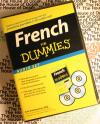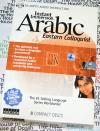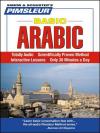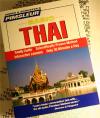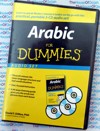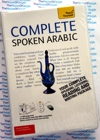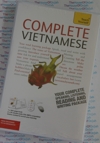Teach Yourself Complete Gulf Arabic 2 Audio CDs and Book - Learn to Speak Gulf Arabic
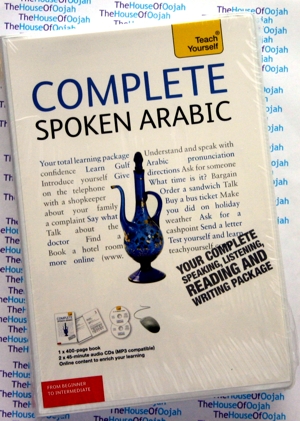
Teach Yourself Complete Spoken ArabicGulf Arabic2 CDs and BOOK Get Other Arabic language learning Audio click here |
 |
Teach Yourself Complete Spoken Arabic - Book and 2 Audio CDsBrand New 2 CDs and Book Do you want to be able to understand and speak the Arabic of the Arabian Gulf confidently? All you need is this bestselling course from Teach Yourself - the No.1 brand in language learning. This course teaches the spoken Arabic of the Gulf region through everyday real-life situations that make the grammar and vocabulary easy and memorable, with complete audio support available separately - MP3 compatible.To learn Modern Standard Arabic - used in writing and formal situations throughout the Arabic-speaking world - pick up a copy of Complete Arabic, also from Teach Yourself. Complete Spoken Arabic (of the Arabian Gulf) is structured in thematic units and the emphasis is placed on communication, so that you effortlessly progress from introducing yourself and dealing with everyday situations, to using the phone and talking about work. By the end of this course, you will be at Level B2 of the Common European Framework for Languages: Can interact with a degree of fluency and spontaneity that makes regular interaction with native speakers quite possible without strain for either party. Learn effortlessly with a new easy-to-read page design and interactive features: NOT GOT MUCH TIME? AUTHOR INSIGHTS GRAMMAR TIPS USEFUL VOCABULARY DIALOGUES PRONUNCIATION TEST YOURSELF EXTEND YOUR KNOWLEDGE * Practical - concentrates on the practical language of everyday conversation. Table of Contents: About the Authors Frances Altorfer, co-author, was a modern languages teacher in secondary education. About Gulf Arabic LanguageGulf Arabic is a variety of the Arabic language spoken around both shores of the Persian Gulf, mainly in Kuwait, eastern Saudi Arabia, Bahrain, Qatar, the United Arab Emirates, and parts of Oman. Some notable characteristics that set it apart from other Bedouin dialects is the small number of Persian loanwords, and a pronunciation of k as ch ("kalb" dog, read as "chalb"); and, in some instances, the pronunciation j as y (jannah "paradise", read as "yennah"). About the Arabic LanguageArabic rabī) is the largest living member of the Semitic language family in terms of speakers. Classified as Central Semitic, it is closely related to Hebrew and Aramaic, and has its roots in a Proto-Semitic common ancestor. Modern Arabic is classified as a macrolanguage with 27 sub-languages in ISO 639-3. These varieties are spoken throughout the Arab world, and Standard Arabic is widely studied and known throughout the Islamic world. Modern Standard Arabic derives from Classical Arabic, the only surviving member of the Old North Arabian dialect group, attested epigraphically since the 6th century, which has been a literary language and the liturgical language of Islam since the 7th century. Arabic has lent many words to other languages of the Islamic world, as Latin has contributed to most European languages. And in turn, it has also borrowed from those languages, as well as Persian and Sanskrit from early contacts with their affiliated regions. During the Middle Ages, Arabic was a major vehicle of culture, especially in science, mathematics and philosophy, with the result that many European languages have also borrowed numerous words from it especially Spanish and Portuguese, countries it ruled for 700 years (see Al-Andalus). "Colloquial Arabic" is a collective term for the spoken varieties of Arabic used throughout the Arab world, which, as mentioned, differ radically from the literary language. The main dialectal division is between the North African dialects and those of the Middle East, followed by that between sedentary dialects and the much more conservative Bedouin dialects. Speakers of some of these dialects are unable to converse with speakers of another dialect of Arabic; in particular, while Middle Easterners can generally understand one another, they often have trouble understanding North Africans (although the converse is not true, due to the popularity of Middle Eastern—especially Egyptian—films and other media). One factor in the differentiation of the dialects is influence from the languages previously spoken in the areas, which have typically provided a significant number of new words, and have sometimes also influenced pronunciation or word order; however, a much more significant factor for most dialects is, as among Romance languages, retention (or change of meaning) of different classical forms. Thus Iraqi aku, Levantine fīh, and North African kayən all mean "there is", and all come from classical Arabic forms (yakūn, fīhi, kā'in respectively), but now sound very different. |
Teach Yourself Complete Spoken Arabic - Book and 2 Audio CDs |
| Stock Info: | Out of Print |

 0 Items (Empty)
0 Items (Empty)

